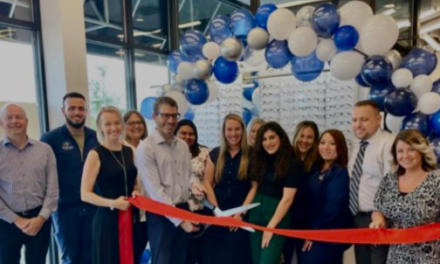I started Handcrafted Learning over a decade ago. Growing a business is a unique challenge and it wouldn’t have been possible without advice from mentors, learning through direct experience, and working with an amazing team.
I hope these five things I’ve learned over the years will help other women of color as you lead teams and run companies.
- People will underestimate you. Don’t internalize the bias.
As a 4-foot-11 brown woman who founded a tech-based company in my 20s, I encountered people who underestimated my skills and experience. Most were well-meaning and didn’t realize they were being influenced by larger cultural patterns of racism, sexism, and classism.
Growing up with my indigenous mother who’s an immigrant, I was used to being dismissed or unseen. When I became a young adult and stepped into new social circles, people sometimes assumed I was “the help” or didn’t notice me at all.
I’ve learned that no matter how hard I work and no matter what I accomplish, I will still experience bias. But experiencing bias isn’t a reason to give up; it’s a reason to nurture self-respect.
- Find your allies.
Like many women of color, I didn’t grow up with access to powerful networks or financial capital. I did grow up with a strong work ethic and high-quality standards, and I bet you did too. Otherwise, you wouldn’t be running a business. It’s going to be tempting to try to do it on your own and depend only on yourself. But it’ll be easier, and more enjoyable, if you learn to depend on others.
So, who can you depend on? Who can you trust? That’s where allies come in.
In my experience, an ally is someone who clearly sees your qualities and capabilities, and takes action to help you overcome the systemic barriers you face. The action may be direct encouragement, specific coaching in an area where you need support, or championing you or your company in a forum where you would have been overlooked.
Allies respect you. They aren’t competing with you. They’re excited when you do well.
I’ve been fortunate to work with clients, team members, and mentors who’ve been great allies. We’ve grown together, learned together, and taken on challenges I wouldn’t have thought possible.
Find your allies. They’re out there. They’re looking for you, too.
- Be an ally.
Sometimes you need an ally; other times, you can be the ally.
Allyship is an action, not just an intention. As a business owner, you’re already familiar with making decisions and acting on them. So, analyze your ecosystem. Notice every person you come in contact with: clients, employees, suppliers, partners, and end users. Determine where in that ecosystem marginalized groups have been historically excluded.
When you build your team, you have the ability to look for underlying qualities instead of traditional qualifications. For example, at Handcrafted Learning, we appreciate the work that goes into academic degrees, but they’re not required for any of our roles. It’s been a way for us to level the playing field and give people from a range of backgrounds the opportunity to work with us. We look for candidates who are empathetic, intelligent, and collaborative, first and foremost.
The client stakeholders who we work with include brilliant women and people of color leading teams at Fortune 500 companies. I try to amplify the great work they’re doing within their organization and highlight their accomplishments to the C-suite. Sharing unsolicited observations with someone’s boss can help them be more clearly seen and recognized. One of the joys of running this business has been developing long-term relationships with exceptional people doing exceptional work and seeing them earn new opportunities over time.
When we create learning experiences that tens of thousands of learners will go through, it’s an opportunity to advocate for people who are underrepresented. For instance, training for learners who are blind has traditionally been terrible. If you or someone you know uses a screen reader, you probably know what I mean. For years, our team has been passionate about answering the question: what makes a great interactive learning experience when you can’t see the screen? Figuring out the answer has been a conscious investment and significant R&D, but it’s worth it when a non-sighted learner shares how it feels to have an experience designed for them from the get-go, not as an afterthought.
The burden is not on you to ally for everyone (after all, you’re facing systemic barriers yourself), but there are times you’ll be able to ally for someone else.
People are people through people. Who you choose to support, who you ask for help, and who you collaborate with will shape who you become.
- Focus on what you’re building that’s unique, not on what others have built in the past.
As a woman of color, you might feel like you’re taking a risk just by leading a business, so it can be tempting to play it safe and imitate what other companies are doing. Resist that temptation.
One of the reasons you’re building a business is because you saw an opportunity to do something better, to innovate. Don’t lose touch with that feeling, especially as the business expands. Innovation isn’t just the energy that starts a business, it’s the energy that sustains and grows it.
Of course, as your business scales, there are important changes you’ll need to make; just make sure they don’t erase what makes your business special. Understand your industry, certainly, but keep in mind that just because something has always been done a certain way, doesn’t mean it’s the best way to do it.
In the learning and development field, for example, antiquated ideas about knowledge-focused training are still the norm. Boring voiceovers, PowerPoint slides with walls of text, and multiple-choice quizzes that resemble the worst parts of traditional schools are rampant.
At Handcrafted Learning, we intentionally focus on practice and the development of skills, by allowing learners to go through simulations of their job. To develop a new skill everyone needs the opportunity to make choices, make mistakes, and experience the outcomes of their choices. That practice-based approach is what guides our designs.
If we had “played it safe,” we wouldn’t have been able to become the trusted partner of five Fortune 10 companies and dozens of Fortune 500 companies.
When you face a new challenge, don’t ask yourself what should be done; ask yourself what could be done. What could your company innovate that would be meaningful to your customers?
Your uniqueness enhances the value of your business and the value your company brings to the world.
- Don’t be afraid to build a business that has a positive impact on the world.
The world needs you—a woman of color—to lead. No matter where on the globe you live, by leading a company, you are helping society to evolve. Every day, you broaden people’s perception of what a CEO looks like, and you are a role model to other women of color.
But your impact doesn’t end at perception and representation. Your business is a vehicle for change. Businesses solve problems, so why not design yours to solve some of the biggest issues facing the world?
You might ask yourself, “who am I to tackle such a massive challenge?” I want to assure you: your insights, perspective, and vision are exactly what is needed.
In every field, there are ways to have a positive impact on the planet. In ours, we’ve designed learning experiences that help decision-makers at Fortune 500 companies reach their carbon-emission goals, we’ve helped global organizations take steps toward social equity by supporting their leaders to adopt new practices, and we’ve helped hundreds of thousands of learners develop concrete skills so they can better perform their jobs and feel better about themselves.
You’re a woman of color leading a business. Nurture self-respect, find your allies and be an ally, and develop your company to uniquely tackle some of the biggest problems in the world. The world needs it. The world needs you.




